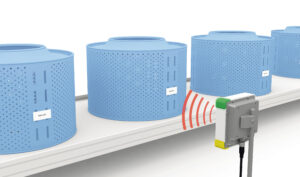Location: Manteca, CA
Challenge
An almond hulling and shelling facility, located in the Central Valley, has been operating for years by manually operating equipment utilizing older “bucket style” motor starters with individual HOA switches and hardwired interlocks. The customer was going through an expansion and replacing many pieces of older equipment which would require more controls. Their prime objective was to get their current and expanded operation up-to-speed, technologically speaking, by introducing an automated solution while also maintaining a safe environment, and at the same time increasing efficiency and productivity. PCA was tasked to design and implement an overall controls concept using the latest in control system technologies while keeping costs within budgetary constraints.
Features & Benefits
While developing an overall plan for the new plant-wide control system, it was necessary to evaluate numerous technologies that could be integrated to accomplish the goals of the customer. After careful consideration, PCA came up with the following system architectures, while outlining the benefits of each:
Consolidating all Motor Controls Utilizing “Bus Style” Architecture for Across-the-Line Starters and Ethernet/IP Enabled VFD’s
By designing and fabricating individual MCC’s (Motor Control Centers) using NEMA 12 disconnect enclosures and IEC type starters with Eaton SmartWire DT technology, PCA proposed saving plant floor space while providing the same or greater control over control of equipment in lieu of larger and outdated NEMA starter sections. In addition to the “Smart” starters, certain equipment would require the use of VFD’s (variable frequency drives) for flexible speed controls. All of these motor controls would communicate via Ethernet/IP, which is a solid standard that is widely accepted and used for a variety of applications and industries. In addition to starting/stopping motors, a variety of diagnostic and process data would become available on the network. This would include, for example, instantaneous motor amperage for every motor in the facility which allows “High Amps Warning” alarms to appear on the SCADA system, making it easier to identify problems before they occur.
Rockwell ControlLogix PLC Platform
For the “brains” of the operation, PCA proposed using the ControlLogix platform due to its proven capabilities and as a standard in many industries today. Due to the platform’s wide use and acceptance, the programming and maintenance of the system can be performed by a huge pool of qualified individuals and can be scaled appropriately for future expansion.
Inductive Automation’s Ignition SCADA Platform
For an operations visual interface, PCA proposed using several touchscreen-enabled monitors and industrial PC’s throughout the facility for monitoring and controlling the entire operation. The Ignition platform allows a scalable system to be developed at a fraction of the cost of other solutions available, in addition to being one of the most advanced systems on the market today.
Industrial Wireless Mesh Network and Tablet PC
In order to assist operations and maintenance, PCA also proposed the use of an industrial mesh network throughout the facility. In conjunction with a Microsoft Surface Pro tablet PC enclosed in a military grade case, users can wirelessly view and control the plant via the Ignition SCADA system, which becomes very useful when working on equipment out of reach of one of the fixed SCADA touchscreen displays. It also allows a Wi-Fi access point to authorized personnel for Internet access via their cell phones without having to use cellular data.
Substation Power Quality Monitoring
PCA proposed using a Shark 250 power quality meter supplied by Electro Industries/Gauge Tech, which would give the customer a greater insight on not only the amount of energy their facility is consuming, but also be alerted to important events that are monitored 24/7 affecting their overall power quality. This could include sags/swells, brownout conditions, harmonics and several other metrics.
Baghouse Differential Pressure Monitoring
Due to regulatory compliance, it is necessary for all hulling and shelling operations to monitor and log the DP (differential pressure) across baghouse filters. This is typically done by reading magnehelic gauges located by each baghouse on a daily basis and making entries into a logbook or spreadsheet. PCA proposed using DP transmitters that would intercept these pressure readings and routing to a central logging system on a periodic basis (every 10 seconds), which allows operators to concentrate on the actual operations of the plant and not be tasked with this manual data logging. This data would also be available in the “Cloud” via an Internet dashboard. Also, when certain baghouse DP’s become too high, email alerts (in addition to visual alarms on the plant’s SCADA system) are sent to certain operations personnel to notify of pending filter issues.
Baghouse Variable Speed Fan Controls
In addition to DP, PCA also proposed using an additional transmitter tied to the “Dirty” side of each baghouse, which would be used as a process variable controlling each individual baghouse fan motor currently on VFD control. This provides closed loop control for maintaining a constant suction pressure which in turn could adjust the fan speeds down while manually closing off any unused suction lines via existing dampers. This can in decrease energy usage, while in turn save thousands of dollars for the customer.
Summary
By taking all of the proposed architectures above, PCA was able to design and implement a very powerful and robust system which was easy for both operations and maintenance personnel to use and navigate. Once all of the hardware was installed in the field by one of our licensed partners, it gave the customer more visibility and control than the previous manual system, and it will allow flexibility for future modification and expansion.



